Three of the games here look amazing. Only two of them play amazing.
By Video_Game_King 71 Comments
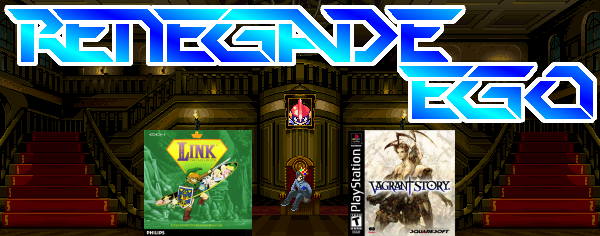
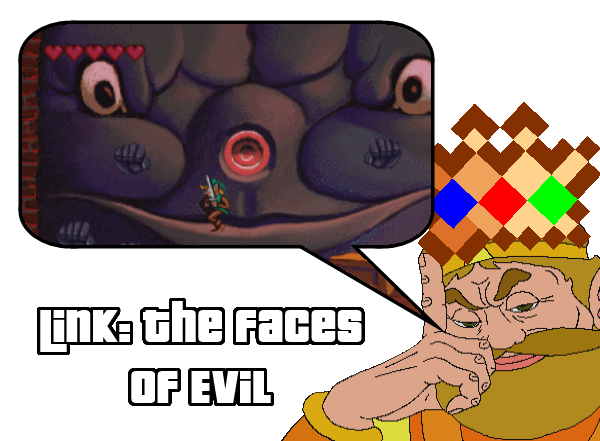
Didn't I just do this game? Close; I covered Wand of Gamelon a couple of weeks ago, promised that I'd cover this game, and kept true to my word. Buuuut since these games are so damn similar, I fail to see the point in writing what would essentially be the same review. So instead, I'm simply going to review another game in place of this one, post all the Zelda CD-i videos I have saved up for future blogs, and put this behind me once and for all.
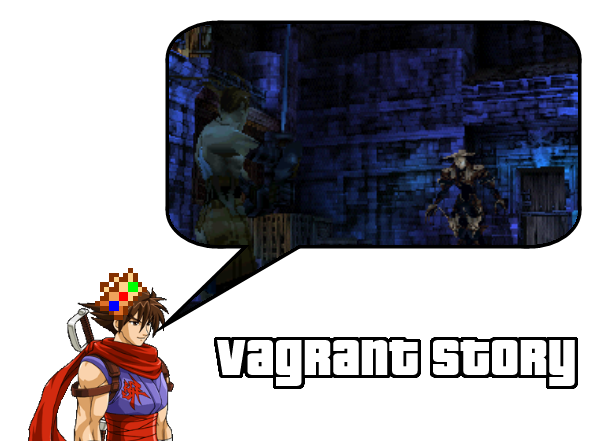
And what better way to put it all behind me than with a game that's its polar opposite? After all, where Faces of Evil lives up to its name in all the wrong ways, Vagrant Story features faces that look and emote like actual human faces. Where Wand of Gamelon couldn't get past the first act of the three act structure, Vagrant Story clearly knows what the hell it's doing when it comes to narratives. And....OK, you get it. I really like this game, alright?
It all begins with a billion cutscenes, all of them looking like something out of a medieval heist movie. Soon, our badass villain, Edward Elric, drops a dragon on our protagonist and promptly leaves town. Now it is up to the utterly generic Ashley Riot to descend upon the magical city of Lea Monde and end Sydney's games for good. However, the city's less "happy fun adventure time" magical and more "darkness earthquakes create a million zombies and yet more Shakespeare references" magical, a fact that works in the game's favor. You only find this out slowly over the course of the game, so there's a sense of intrigue and mystery surrounding the city, and it's enough to make you want to push forward and figure out just what the hell's up with the city. The constant political gambits the various characters play against each other only amplifies said feelings, even if they can be hard to follow at times. Still, though, if I was to recommend Vagrant Story on one factor alone, it would probably be this one.
In some cases, it's even enough to carry the weaker aspects of the game. Aspects like our protagonist. I know I mentioned it before, but it bears repeating: this is a generic bastard. His defining personality trait, as far as I can tell, is that he exists. Later on, he gets some fleshing out, but not in terms of personality, as that remains as anemic as ever. No, we get development of his juicy, juicy back story. All we really know is that he's now part of the Valendia Knights because of something regarding a family that may or may not be his and may or may not have ever existed. It's the exact same appeal as the story behind Lea Monde. The only real difference I can note is that while you get some clear answers with the city, Ashley never gets that clarity. Now that may piss off those looking for something less ambiguous, but I don't find it too much a problem. I mean, the game's already playing around with ideas of the thin limits between reality and fantasy (what with there being a fantasy creature to slice in half every ten feet), and I don't think definite conclusions would fit well into that schema.
So let it be known that I really love the story in this game. Yet I must give credit where credit is due: to the writers graphics. What? Can't graphics play their part in telling a story? For as much as I love the slowly eked out past of Lea Monde, I have to imagine the richly detailed environments contribute just as well to the game's setting. And that's nothing compared to how expressive these characters are. They blink, they smirk, they spit (sometimes), and they even move their mouths to form words! That exclamation mark makes a lot more sense when you realize that there's no voice acting in this game, meaning Square had no reason to make the characters' mouths move. But they did, anyway, and it goes a long way toward establishing their presence in the world. They almost feel like actual people instead of, say, actors reading a script. I could go on, but by now, I'm sure we're in agreement on how amazing this game looks. Hell, I'm having a hard time remembering anything I didn't like about it. I think the only significant fault is that the frame rate chugs in a few areas, but that's only because the PlayStation simply can't handle how real this game is.
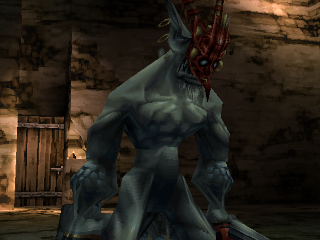
All that, and we still haven't gotten to how the game plays. I swear, my language is just as flowery and dense as the game I'm covering. Anywho, the actual game. A lot of it's based on exploration, for reasons I can't really comprehend. The environments themselves don't provide any motivation for serious exploration. For every one awesome level like anything set in the actual city of Lea Monde, you get crap ones like the Lost Woods and mines with really bad block puzzles and whatever else the developers carried over from late 90s game design. Oh, and a billion brown caves. But maybe the material rewards are enough to balance out the visual monotony, except they aren't. It's pretty much all equipment, which, in itself, isn't terribly bad.
This does, however, come with a lot of baggage, a lot of it in the form of an oddly complex range of weaknesses. You have to worry about weapon type weaknesses, species weaknesses, elemental weaknesses, and maybe some other stuff that I stopped paying attention to long ago because all of my weapons seemed to do the same amount of damage, anyway. But there are also the menus upon menus to consider. While there is a quick menu you can pull up any time mid-battle, you can't equip weapons from it, making the previously discussed weapon angle that much harder a sell. Then again, this may be just me. Who knows? One of you might enjoy wandering through Dirt Alley (or, as the game probably calls it, "The Weak Suffer the Chickens") to obtain a new weapon that requires twelve menus to equip and will most likely alter your rhythm in combat.
You are a dangerous individual not fit to live in civilized society.
For the sane individual, there is the combat, which is somewhat hard to explain. It's an action RPG, but it isn't? There are a lot of systems to cover, and it's not easy figuring out where to begin. But begin I shall. Combat happens in real time until you decide to initiate an attack, at which point you get to choose which part of the enemy's body is most deserving of death's cold embrace. Fortunately, the enemies are various enough in focus and often resilient enough that this is a meaningful choice on your part. And here we come to the key strength of the combat system: the strategy. There are just so many systems to keep track of at any one time, each one having a significant effect on where things go. You have the aforementioned VATS system, the status-destroying Chain Attacks, the appropriately named Risk system, the shitty shit weaknesses sucking all kinds of ass, and so on. It sounds like a lot to manage, but weaknesses aside, it's all surprisingly easy to manage, striking a good balance between depth and accessibility.
And yet for all the consideration you have to give toward the systems I just described, just as much effort goes into the execution as does the planning, so there's some real skill involved and, consequentially, an appropriate sense of accomplishment accompanying it. But that's not what....OK, that's actually a very good reason why you should play Vagrant Story. Whatever. I was trying to say that the story's an even greater motivation (with the graphics trailing behind both). I'm just not very good at saying these things.
Review Synopsis
- Reyn and a resident Giant Bomb user are dropped into the land of Ivalice. Somehow, they emerge with a fantastic story.
- Reyn emerges after about ten to fifteen hours of navigating more brown rooms than his contemporary Raziel.
- Fortunately, the combat's there to spice things up.
As I said, here are all the Zelda CD-i videos that I've been wanting to post. Warning: there are a lot of (fucking weird) videos following this text.
I told you they were weird.
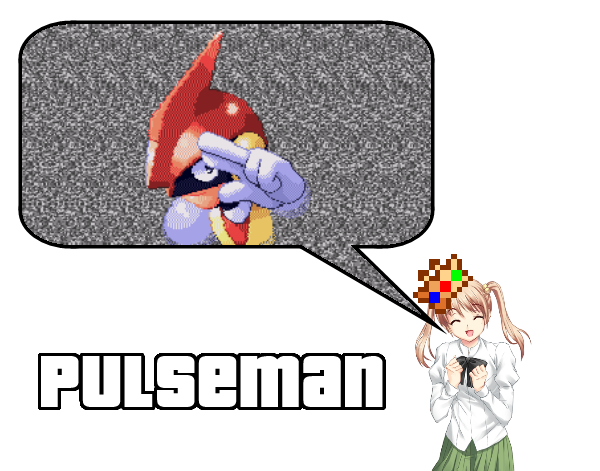
If ever my blog had a clear purpose, it would probably be something like "I review whatever obscure-ass game I happen upon". But if I had a much clearer purpose, it would probably be to reveal obscure games that are criminally underappreciated, a purpose into which Pulseman fits perfectly. This game's about a superhero who bounces around levels pinball style as an orb of pure electric energy. Why don't more people know about this game? (I bet it's that whole "extremely limited release" shtick.)
Actually, just taking a quick glance at it, I can probably understand why somebody would look this over. It's just another cute (if extremely good looking) platformer, of which there were a billion already, right? HOW CAN A HYPOTHETICAL PERSON BE SO WRONG!? I'd say that there's one thing separating Pulseman from other platformers, but the truth is that there are several things, the most prominent among them being the electricity. Walk around for a bit, and you build up a charge, which allows you to shoot energy beams, bounce around like an electric pinball (a band name I've already reserved), and do this one move that seems to make the screen flip the eff out. It's that second one we're interested in, though. I mean, yea, energy bolts are useful, but how do they even compare to shooting about the world on electric wings? That feature gives the game the chaotic sense of speed that makes it so fun in the first place. Sometimes, that feature backfires miserably, like anything to do with the finicky electric wire, but fortunately, those tend to be exceptions to the rule.
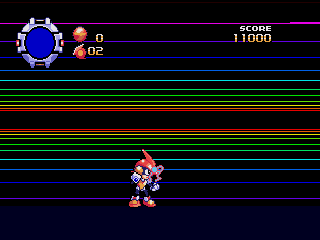
I have to imagine a lot of that is because of the sense of control Pulseman maintains. As off-the-walls crazy as the ability to literally bounce off walls sounds, most of the levels are designed with this feature in mind, so you're having fun within limits. And for every one part dedicated to this pinball-esque insanity, there's a more traditional, far slower paced platforming section around the corner. Now this may sound like an odd mix, but this pairing is completely necessary for the game to stay at its level of quality. Neither idea can completely carry this game. The Arkanoid electric madness (got that bad name, too) would inevitably become stale over the seven levels that you traverse, and while the slower portions are reasonably challenging, their design is perhaps too plain to bear the weight of the entire experience. But as Pulseman strikes a good balance between the two, this never becomes a problem.
Speaking of problems, maybe it's time I actually speak of this game's problems instead of dishing out blind praise. For one, the bosses aren't that hard. Usually, the difficulty lies in figuring out their patterns rather than in acting on that, and given how most bosses only have two to three moves, these aren't the hardest patterns to crack. More damning for the game are the control issues. Everything's very momentum based, which works out OK when you're simply running around. Jumping, though, is more of a pain. If you were moving forward while you were jumping, you're gonna move forward while falling. Straightforward, yes, but it reduces jumping precision and results either in me finicking about with the left and right buttons or Pulseman plunging foot first to a horrible death. The game doesn't even have a good justification for this. The physics in the game are largely rigid and set in stone, so that angle's out. Challenge might also explain these control choices, since, well, they make the game more challenging. Not in a good way, though. More in a "fighting against the game" sort of way. OK, less a fight and more a minor spat, but whatever. I think you understand.
Oh, and maybe I should mention the story premise at some point. There's this doctor person, and, this being a work of fiction, he's super duper evil. In enters Power Ranger Pulseman to put an end to his cartoonish ways. And I do mean cartoonish (or, rather, cartoony). The atmosphere's reminiscent of a Japanese cartoon circa 1974, with its squishy, non-threatening character designs, lending the game a lighthearted sense of urgency that feels right at home in the world of Pulseman. Man, now I want an HD remake of this game so damn bad. And this game is so deserving of it, too. Nobody really played it in its heyday, and can you imagine those trippy electric levels with glorious HD graphics? I think what I'm getting at is that I want Pulseman to enter the modern world with a thick Scottish accent. Then again, don't we all?
Review Synopsis
- When most people think "pinball platformer", they probably think of Sonic Spinball. Show them this and they will understand the error of their ways.